Reliability remains a top priority for both new and used car buyers. When selecting your next vehicle, it’s important to feel confident that it will last for thousands or potentially even hundreds of thousands of miles.
This analysis evaluates each vehicle’s likelihood of reaching 250,000 miles and measures it against the national average.
The typical vehicle has just an 8.6% chance of achieving that milestone. However, the vehicles featured in this list significantly exceed that benchmark, with some models posting survival rates of 15%, 20%, and even 30%.
Toyota Tundra
As you’ll notice, Toyota holds a strong presence on this list. However, no Toyota model has proven more historically reliable than the Tundra pickup.
The Tundra boasts a 36.6% chance of reaching 250,000 miles an impressive figure that’s 4.2 times the national average.
That said, recent concerns have emerged regarding reliability, as Toyota plans to replace 100,000 defective engines in 2022–2023 Tundra and LX models. Even so, the Tundra remains one of the most dependable choices overall.
The Toyota Tundra is the flagship truck in Toyota’s lineup, and as previously mentioned, its pricing is what excluded it from DCOTY judging consideration.
With a price cap of $150,000, the new Tundra starts above that threshold, preventing it from being included. At the time of testing, the available model was the V6 hybrid Limited, which starts at $155,990 before on-road costs. A more expensive Platinum grade will be available soon.
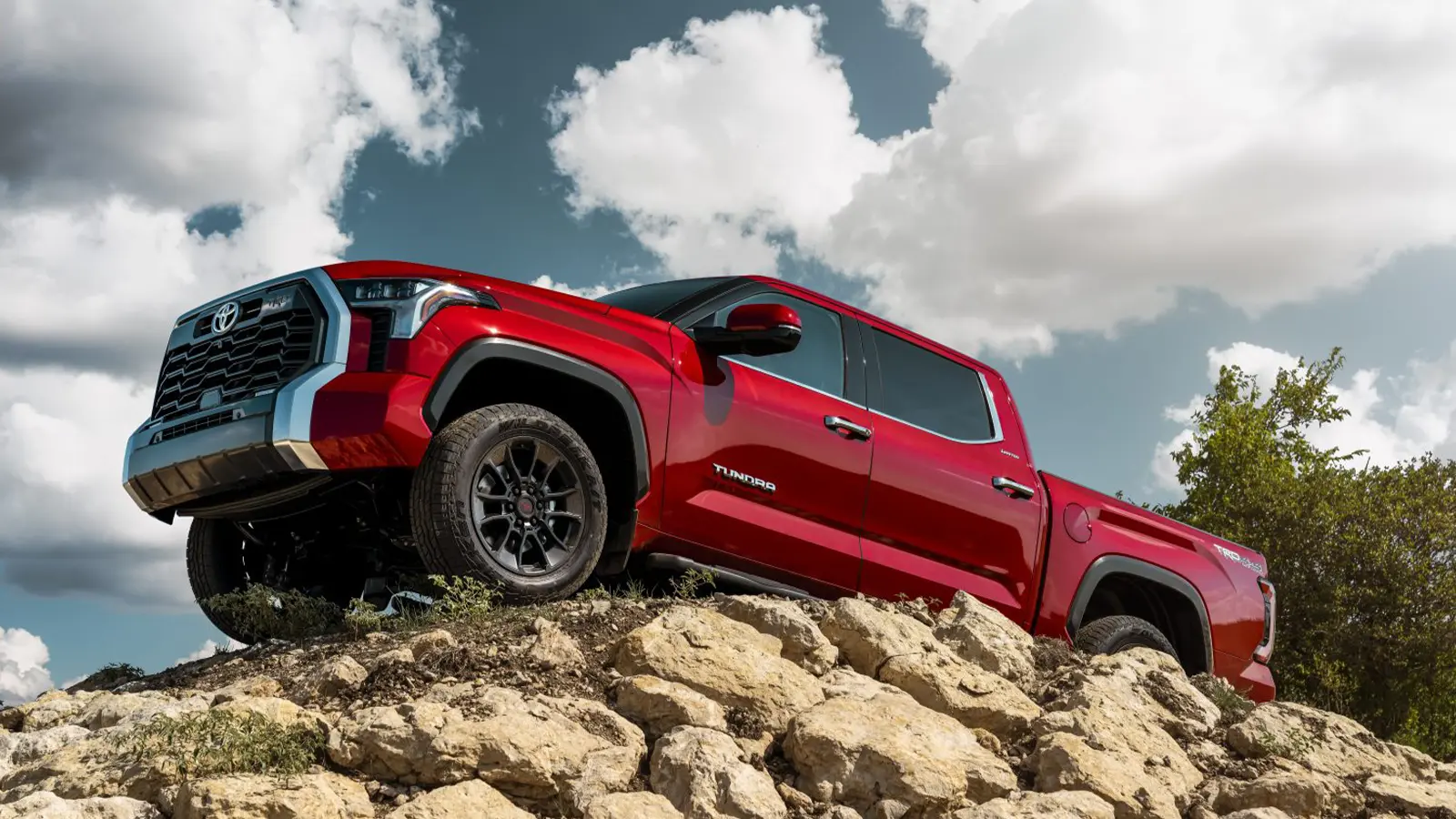
If you’re comparing prices, a new Ram 1500 Laramie Sport starts at $141,950, while the Limited starts at $159,950, both before on-road costs.
For the Chevrolet Silverado 1500, the LTZ starts at $130,500 before on-road costs, with the ZR2 remaining the off-road-focused model, not directly comparable here. Ford’s F-150 XLT SWB starts at $106,950, while the Lariat SWB begins at $139,950, both before on-road costs.
This segment is fascinating to analyze, with a significant price jump—around $50,000—between the most affordable F-150 and the Tundra we tested.
With only four key players in this segment, each offering two models (once the Tundra Platinum arrives for Toyota), it seems buyers tend to align their budget with the brand that best suits their preferences, rather than comparing rivals on standard features and value.
Toyota has a strong fan base in the U.S., an extensive dealer network, and good access to parts, particularly in rural areas where many Australians are familiar with owning Toyotas.
Also Read: 10 Best Cars That Balance Horsepower With Long-Term Value
Toyota Sequoia
Coming in just behind the Tundra is the three-row Sequoia. As Toyota’s largest SUV, the Sequoia has a 36.4% likelihood of reaching 250,000 miles an impressive statistic that’s 4.2 times higher than the national average.
However, the newest Sequoia models are experiencing issues similar to those of the Tundra; Toyota has issued recalls for several thousand 2023 and 2024 Sequoias due to unexpected movement when shifting into neutral. He is known for joking that he learned to drive a manual transmission in his family’s 1991 Toyota Previa minivan, despite it being a rear-wheel-drive mid-engine vehicle.
The pros of the 2025 Toyota Sequoia include a robust powertrain thanks to its V6 hybrid engine, an impressive array of standard and optional tech features, a smooth ride for a truck-based SUV, and an excellent maximum towing capacity.
However, the Sequoia does have its cons, including noticeable wind noise at highway speeds and an awkward third-row seating position.
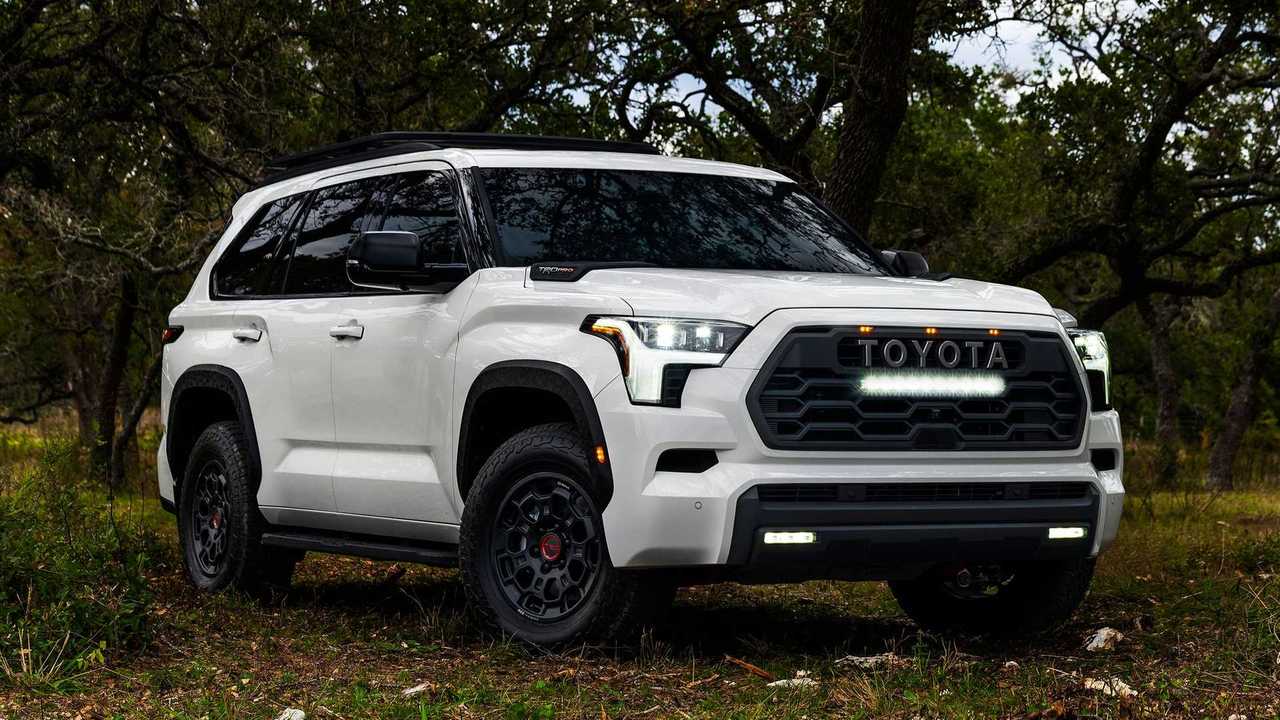
New for 2025 is the addition of the Texas-inspired 1794 trim level and an upgraded Tow Tech package, which now includes a Wi-Fi trailer camera. This Sequoia is part of the third generation, which was first introduced for 2023.
Despite the dominance of car-based crossovers in the sales charts, the 2025 Toyota Sequoia stands out as a classic body-on-frame SUV, making it an ideal choice for those who need to haul both passengers and gear.
The latest generation, which was introduced just a few years ago, features the latest technology and driver assistance features. This rugged SUV can seat up to eight passengers and tow up to 9,250 pounds. It also comes standard with a hybrid powertrain, so you don’t have to sacrifice capability for fuel efficiency.
When considering the cost to drive, estimates for the 2025 Toyota Sequoia SR5 4dr SUV (3.4L 6cyl Turbo gas/electric hybrid 10A) are based on 15,000 miles per year with a mix of 55% city and 45% highway driving, with energy estimates of $3.13 per gallon for regular unleaded in North Dakota.
Monthly costs for the Sequoia SR5 come to $175, compared to the $226 average for large SUVs. Fuel efficiency is often a challenge for large SUVs, but the Sequoia stands out with its impressive EPA estimates.
While it isn’t quite as fuel-efficient as a three-row Prius, its standard turbocharged V6 hybrid setup delivers a powerful 437 horsepower, and depending on whether you opt for rear-wheel or four-wheel drive, it offers an EPA-estimated 20 mpg or 22 mpg combined. This is generally a few miles per gallon better than many rival SUVs in its class.
When considering competitors, the Chevrolet Tahoe, GMC Yukon, and Ford Expedition are all long-established models that provide plenty of towing and hauling capacity.
The Jeep Wagoneer also stands out for its list of standard features and its strong turbocharged inline-six engine. The Sequoia is certainly competitive in this class, though it does have some drawbacks.
Toyota 4Runner
Ranking third on this list is the Toyota 4Runner, which has a 26.8% chance of reaching 250,000 miles making it 3.1 times more likely than the average vehicle.
The 4Runner has been a longstanding pillar in Toyota’s lineup, with the fifth-generation model concluding its run in 2024 after an impressive and successful 15-year stretch. The all-new 2025 Toyota 4Runner is expected to arrive on the market sometime next year.
The 2025 Toyota 4Runner review is authored by Mark Takahashi, a correspondent with extensive experience in the automotive industry dating back to 2001.
Brian is particularly fond of convertibles, especially the smaller models, but dislikes paying for parking, which makes living in Los Angeles both convenient and inconvenient for him.
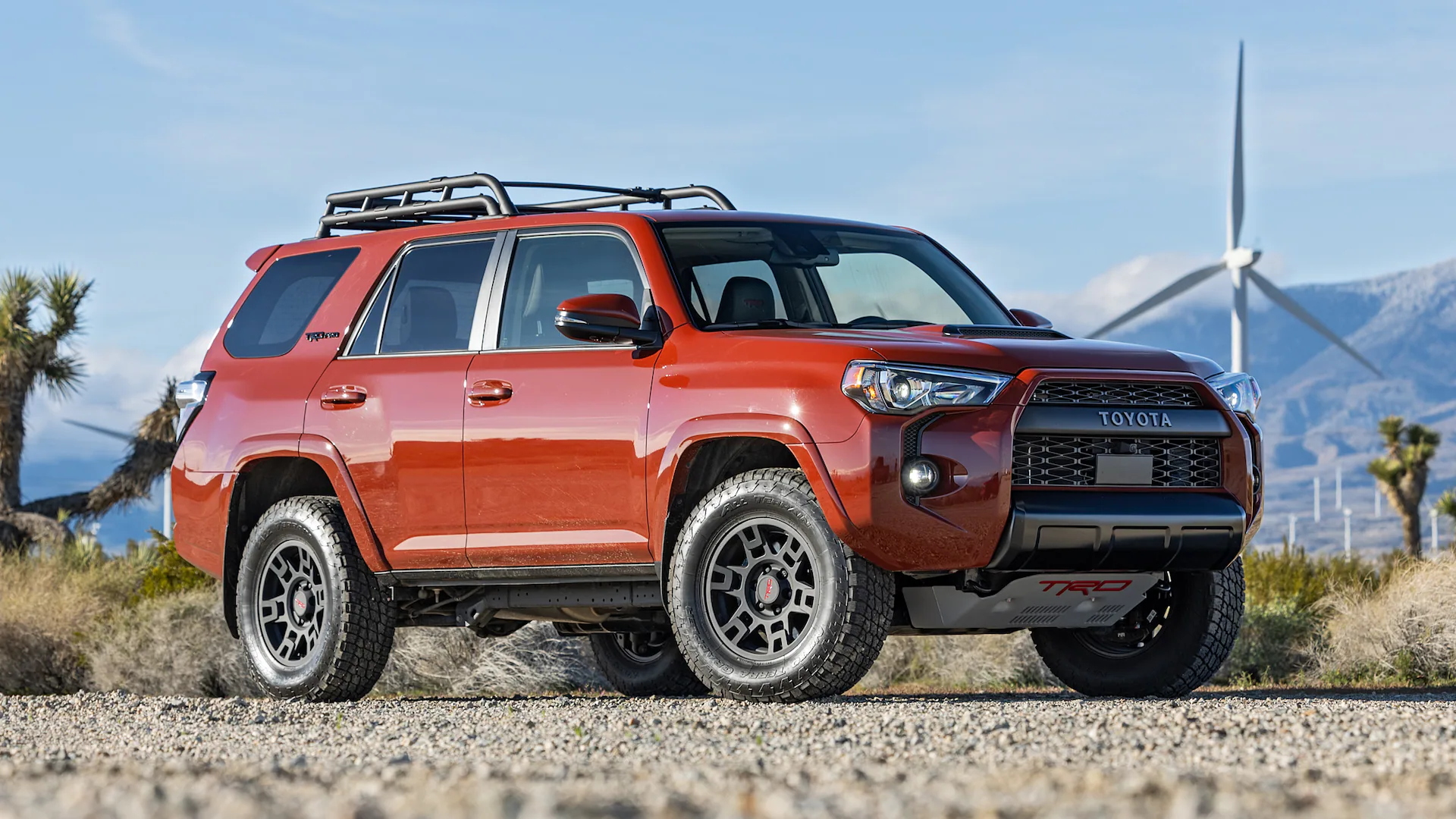
The pros of the 2025 Toyota 4Runner include its impressive all-terrain capabilities, well-mannered performance on pavement, slightly better fuel efficiency than rivals, and a wide range of models to choose from.
However, it also has some cons: limited rear seat space, a hybrid powertrain that reduces cargo capacity, less comfort compared to conventional SUVs, and a very small third-row seat option.
This year marks a major redesign for the 2025 Toyota 4Runner, following 14 years of its previous generation. While the core elements remain intact — it’s still a midsize, truck-based SUV with a rugged appeal — nearly everything else has been updated.
The 4Runner is slightly larger than its predecessor and now features revised styling, an updated interior with the latest technology, a new engine, and additional variants.
The 4Runner is likely to appeal to buyers looking for something more adventurous than a typical crossover SUV but who aren’t quite ready to fully commit to vehicles like the Ford Bronco or Jeep Wrangler. Overall, the 2025 4Runner represents a significant step forward in its evolution.
When it comes to cost to drive, the estimates for the 2025 Toyota 4Runner SR5 4dr SUV (2.4L 4cyl Turbo 8A) are based on 15,000 miles per year, with a mix of 55% city and 45% highway driving. The cost estimates for the 4Runner SR5 are unavailable in North Dakota, but the average monthly cost for midsize SUVs is $176.
Toyota offers a wide variety of options when it comes to choosing a 4Runner. The lineup includes nine trim levels and two engine choices. The base SR5 trim doesn’t come with a lot of features, making it a good choice for those on a budget. For most buyers, different TRD versions are likely to be the most appealing.
Luxury-oriented buyers may be drawn to the well-equipped Limited and Platinum trims, while serious off-road enthusiasts will appreciate the TRD Pro or the new Trailhunter trim.
Every 2025 4Runner now comes with a turbocharged four-cylinder engine that replaces the previous V6. This new engine offers better fuel efficiency and more low-end torque, improving acceleration at low speeds. A hybrid version of the engine is also available, delivering more power and better fuel efficiency.
When considering competitors, the Jeep Wrangler and Ford Bronco stand out as excellent off-road vehicles, but they do require greater sacrifices in terms of comfort and refinement than the 4Runner. On highways and in urban settings, the 4Runner is much easier to live with, offering behavior more typical of an SUV.
The Land Rover Defender is another option worth considering. Within the Toyota family, buyers interested in more off-road prowess and style might also want to check out the new Land Cruiser. For those seeking superior family-hauling capabilities, the Highlander or Grand Highlander would be solid alternatives.
Toyota Tacoma
Despite the debut of a new Tacoma in 2023, the Tacoma continues to hold its reputation as the most reliable mid-size truck available and one of the most dependable vehicles overall.
It carries a 26.7% chance of reaching 250,000 miles, which is 3.1 times greater than the national average. With any luck, the newly introduced fifth-generation model will maintain that same long-term reliability.
Every nonhybrid Toyota Tacoma is powered by a turbocharged 2.4-liter four-cylinder engine, though it comes in two versions and is paired with either an eight-speed automatic transmission or a six-speed manual. Both rear-wheel and four-wheel drive configurations are available.
The entry-level SR model is equipped with a base 228-hp turbocharged four-cylinder engine, while the rest of the Tacoma lineup features more powerful i-Force variants, delivering up to 278 horsepower and 317 pound-feet of torque.
All Tacomas feature body-on-frame construction, but they are equipped with two distinct rear suspension systems. The SR, SR5 extended cab, and TRD PreRunner models utilize traditional leaf springs, while the other trims are equipped with coil springs.
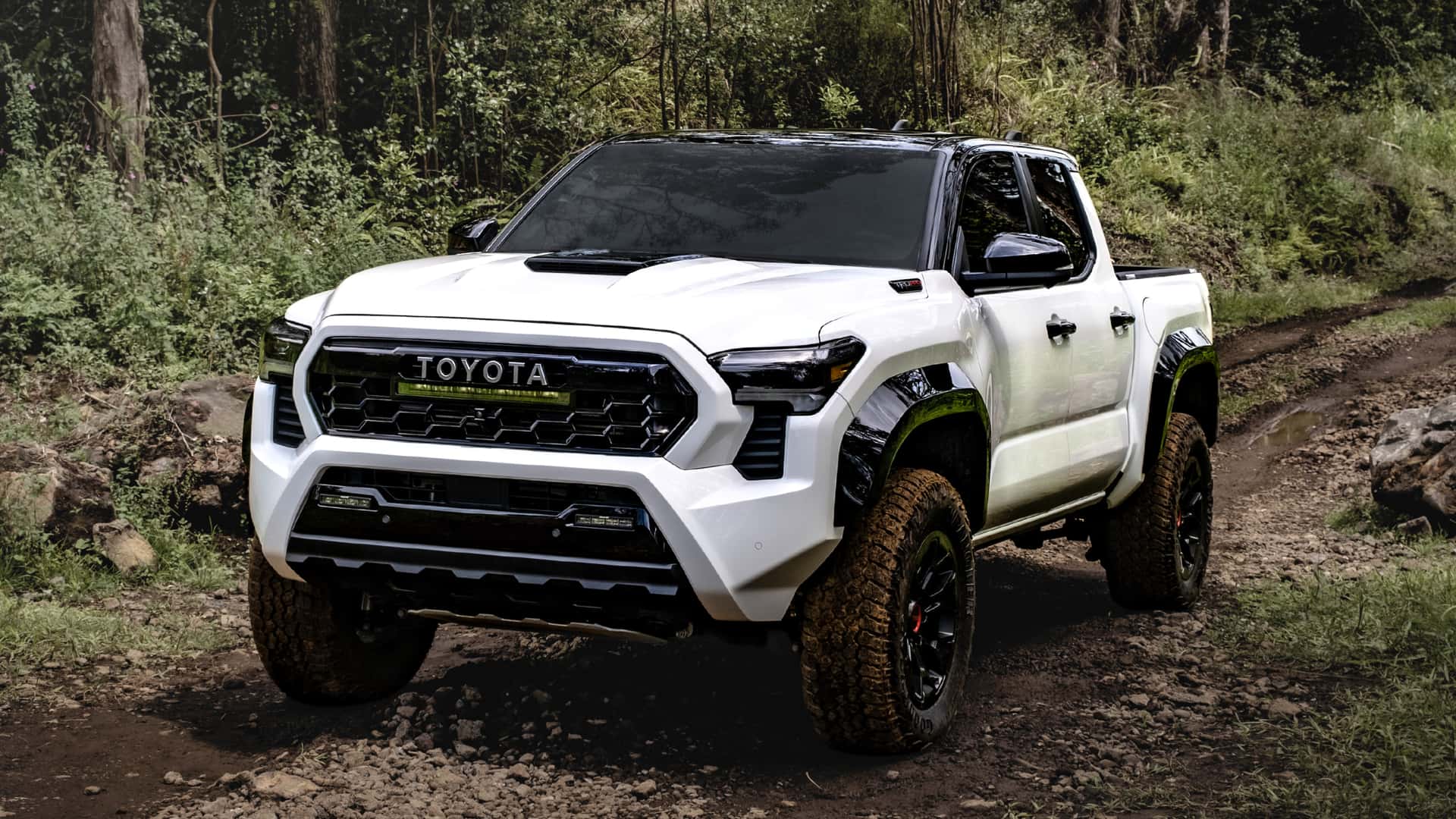
During our time behind the wheel of the nonhybrid Tacoma, we were particularly impressed with its enhanced on-road refinement, especially in models equipped with the new coil springs, which offer a much smoother ride compared to those with the older leaf-spring suspension.
Around town, the powertrain provides more than enough power, and highway merging and passing maneuvers are handled effortlessly. While the Tacoma is well-mannered on the road, it truly excels in off-road conditions. The off-road-oriented models are equipped with the necessary hardware to tackle almost any terrain.
Also Read: Top 10 Long-Distance Driving Cars That Won’t Quit
Toyota Highlander Hybrid
The Highlander stands as Toyota’s dependable mid-size three-row SUV, a staple in the lineup since 2000. The current fourth-generation version made its debut in 2019.
However, it’s the Highlander Hybrid in particular that secures a spot in the top five for reliability. This hybrid model has a 25.9% chance of making it to 250,000 miles, which is 3.0 times greater than the national average.
Comfort, efficiency, and safety are essential qualities for any family-oriented three-row SUV, and the 2025 Toyota Highlander excels in these areas, reinforced by Toyota’s reputation for reliability.
However, the Highlander faces stiff competition, as several midsize three-row SUVs also meet these criteria while offering additional benefits. Some of these competitors come from within Toyota’s own lineup, including the more fuel-efficient Highlander Hybrid and the roomier Grand Highlander—both of which are reviewed separately.
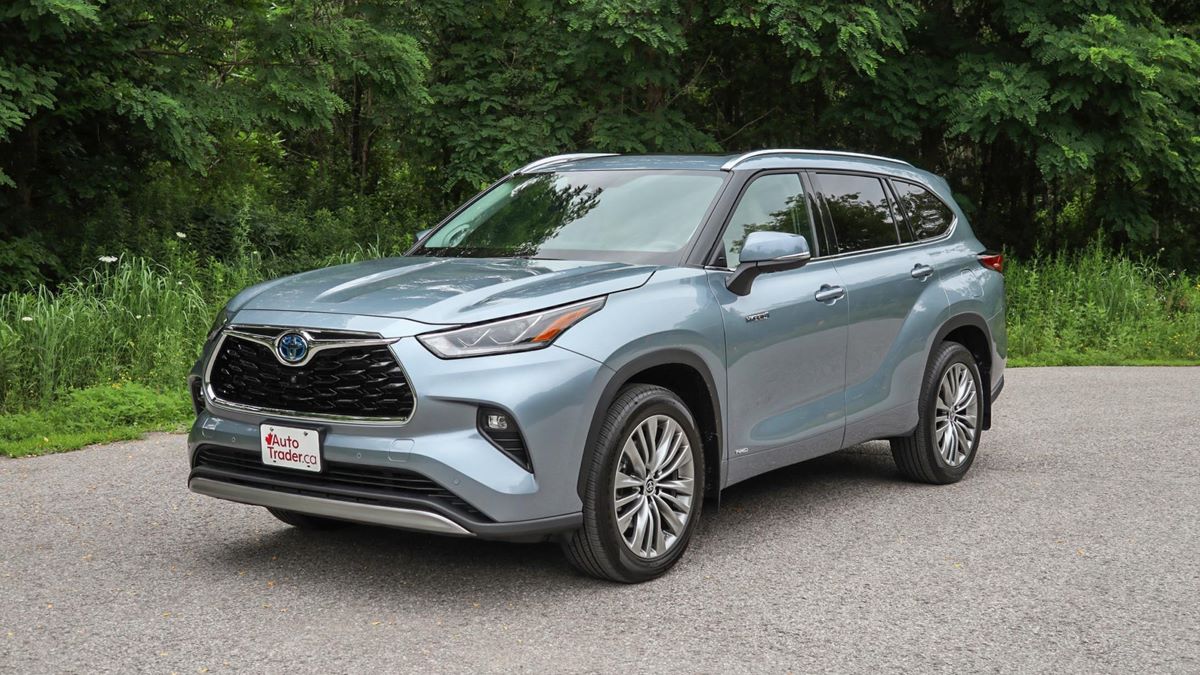
The XLE trim presents the best value and is our recommended choice. In addition to the extensive standard features of the LE, the XLE adds heated front seats, second-row captain’s chairs and sunshades, a wireless smartphone charging pad, and a power sunroof.
All-wheel drive is an extra $1,600, and we suggest adding the Premium Audio with Dynamic Navigation package, which includes in-dash navigation and an upgraded stereo system.
The 2025 Highlander offers two powertrain options: a traditional gasoline engine or a hybrid. (The hybrid is reviewed separately.) The gas-powered version features a 265-hp turbocharged 2.4-liter four-cylinder engine paired with an eight-speed automatic transmission, available in either front-wheel or all-wheel drive.
The Highlander is designed to provide stable and predictable ride-and-handling dynamics, making it well-suited for family driving. While it’s not particularly exciting to drive, those seeking a smooth and comfortable ride will find the Highlander meets those needs perfectly.
Toyota Models That Don’t Live Up to the Hype
When it comes to Toyota, the brand is often synonymous with reliability, efficiency, and longevity. But despite its stellar reputation, not every model in Toyota’s extensive lineup manages to live up to the lofty expectations that come with the brand’s name.
Some of Toyota’s vehicles, while popular, fail to deliver the performance, innovation, or value that their hype would suggest. In this article, we’ll take a closer look at the Toyota models that, despite their acclaim, might not be worth the buzz—and why they fall short of the mark.
2001 Toyota Prius
The second-generation Toyota Prius transformed the automotive landscape. Its influence was so significant and its success so overwhelming that many have forgotten the original Prius, sold from 2001 to 2003, struggled to make an impression.
Initially developed for the Japanese market, the first-generation Prius offered interior space similar to that of a Corolla too cramped for the needs of most American families.
It was awkward in appearance and sluggish in performance, and only the most dedicated hypermilers with an ultra-light driving style could achieve its EPA-estimated fuel economy of 45 mpg city and 52 mpg highway.
With a starting price of $19,995, the original Prius cost about the same as a more spacious and well-equipped mid-size sedan of the era, making it hard for buyers to recoup the premium through fuel savings.
The car’s image wasn’t exactly boosted by Larry David driving one in Curb Your Enthusiasm although he later upgraded to an ’04 model, which certainly didn’t hurt the second-generation Prius’s popularity.
Hybrid vehicles have become a common sight on the road, spanning a wide range of categories from family SUVs to high-performance supercars. This widespread popularity can be traced back to the original Toyota Prius.
Launched in the United States in 2001, the Prius was a pioneer, combining a gasoline engine with an electric motor in a novel way that greatly improved fuel efficiency. This hybrid system had a lasting impact, inspiring automakers worldwide to develop their own hybrid models.

Over time, Toyota refined its approach, with the fifth-generation Prius even winning MotorTrend’s 2024 Car of the Year competition. Let’s take a look back at what made the original 2001 Toyota Prius a game-changer.
Looking back, the success of the first-generation Prius seems almost miraculous. Despite being slow to accelerate and offering a driving experience that was unremarkable at best, the Prius became a household name.
The interior featured cramped seats, materials that felt cheap, and ergonomics that were less than ideal. With a relatively high price tag for the time, it’s surprising that the Prius gained such widespread appeal.
However, the Prius’ groundbreaking hybrid powertrain delivered exceptional fuel economy, which was the key factor in its popularity.
It didn’t take long for the Prius to capture the public’s attention, and soon, a wave of hybrid models from Toyota and other manufacturers followed. The Prius, against the odds, became an influential vehicle that, in many ways, helped pave the way for the electric vehicle revolution we are witnessing today.
Thankfully, the Prius of today has addressed many of the original model’s shortcomings. It now boasts an attractive design, a pleasant driving experience, and remains relatively affordable. The one thing that hasn’t changed, however, is its continued focus on maximizing fuel efficiency.
The 2001 Prius featured a 1.5-liter I-4 engine paired with an electric motor. Together, they produced a total output of 97 horsepower, enabling the Prius to reach 0-60 mph in 13.2 seconds. The quarter mile came in 19.2 seconds at a speed of 74 mph.
The primary goal of the original Prius was to deliver exceptional fuel economy, and it succeeded. The car earned an impressive 52/45 mpg city/highway rating from the EPA, with a total driving range of up to 619 miles on a full tank of gas.
2007 Toyota FJ Cruiser
Shhh… Hear that? It’s the sound of FJ Cruiser fans opening their email apps, ready to send us some hate mail. There’s no denying the FJ was a brilliant vehicle a rugged off-roader with striking retro design that truly carried on the legacy of the iconic FJ40 Land Cruiser.
Enthusiasts adored it (and still do), but to the general public, it came across as impractical a bulky, bouncy SUV that guzzled pricey 91-octane fuel with little regard.
The rear-hinged doors made accessing the back seats an acrobatic challenge, and visibility over the shoulder was virtually nonexistent the only way to reverse an FJ Cruiser safely was to go slow and listen for honking horns or the sound of crunching metal.

Sales started strong during its first few years, but by the middle of 2008, most of the people who wanted one had already bought one.
Toyota then encountered the inherent challenge of retro vehicles: they’re extremely difficult to evolve into a successful successor.
The FJ Cruiser’s journey in the U.S. came to an end in 2014, though Toyota continues to produce and sell it in other parts of the world.
2009 Lexus HS250h
By the mid-2000s, the second-generation Prius had become one of the most sought-after vehicles on the market, and Toyota took notice of its appeal among wealthier buyers.
Market research revealed a strong demand for a luxury hybrid sedan, so instead of simply modifying the Prius, Toyota created an entirely new model for the Lexus brand.
The HS250h was a success in Japan, and Lexus enthusiastically brought it to the U.S. right as fuel prices took a nosedive.
Ironically, low gas prices should have worked in the HS’s favor, given that its fuel economy was rather underwhelming for a hybrid it lagged behind the Prius by about 15 mpg according to EPA estimates.
The car’s driving experience was unremarkable, and its design was slightly too awkward to be considered elegant.
While the interior was outfitted with premium materials and felt upscale, that was par for the course with Lexus vehicles. Sales were underwhelming from the start and continued to decline, leading Lexus to discontinue production in early 2012.
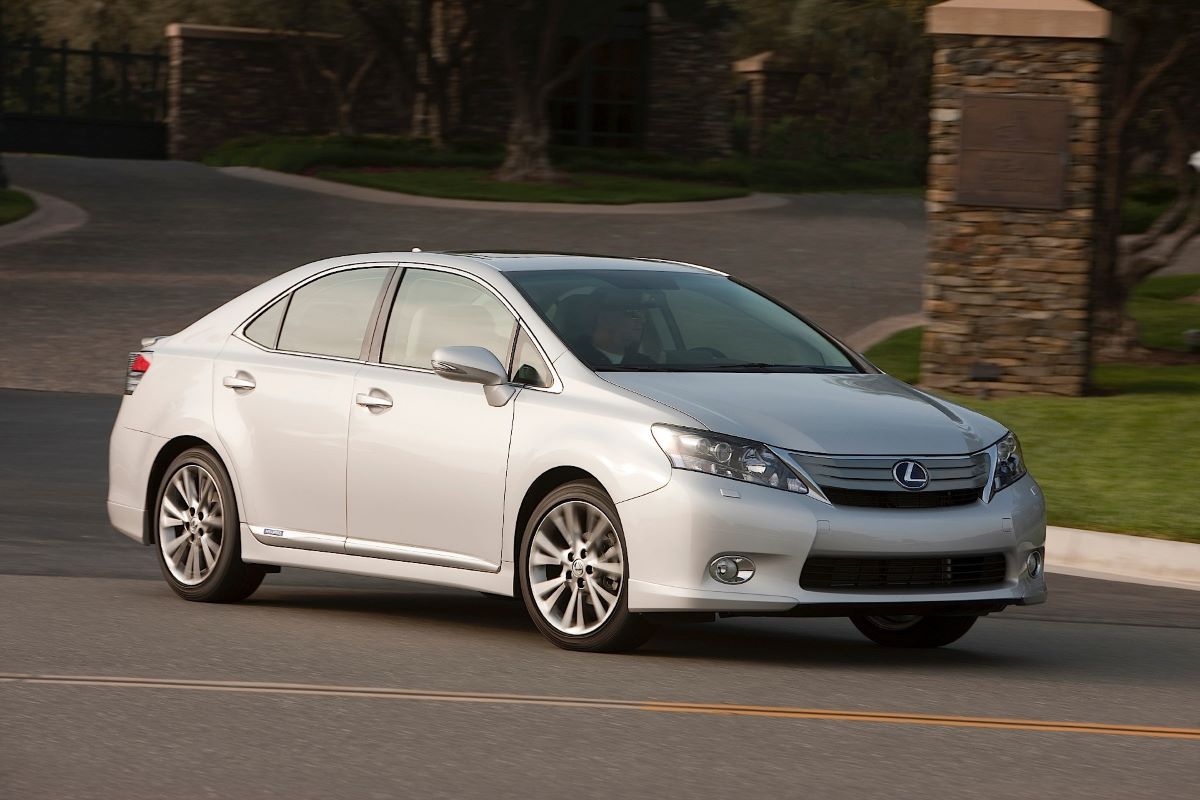
Lexus unveiled the new HS lineup at the 2009 North American International Motor Show, designed to meet the demand for a compact premium hybrid sedan.
Toyota has long been a leader in hybrid technology, starting with the launch of the Prius in 1997. This expertise was passed on to its luxury brand, Lexus. The 250h quickly became the most fuel-efficient model in Lexus’ lineup.
After successfully introducing several hybrid vehicles, Lexus took the Toyota Avensis, modified it, and rebranded it as the 250h. This vehicle was one of the most aerodynamically efficient offerings from the premium Japanese automaker, boasting a drag coefficient of just 0.27.
The headlights were designed in line with other Lexus models, though it was still apparent that the car was based on the Avensis.
The interior was redesigned to better cater to Lexus customers’ preferences. One of the first notable changes was the center stack, where the traditional gear selector was replaced with the Lexus multimedia controller, which functions as a trackball. The gear selector was repositioned closer to the steering wheel, and it was identical to the one found in the Prius.
Under the hood, the 250h featured a parallel hybrid drive system, combining a 2.5-liter Atkinson cycle gasoline engine and an electric motor.
This system was paired with an eCVT automatic transmission that delivered power to the front wheels. For its time, the vehicle also featured advanced technologies such as radar-based adaptive cruise control and camera-based lane-keep assist.
2009 Toyota Venza
The Venza wasn’t a bad vehicle; it simply suffered from unfortunate timing. Developed during a period when gas prices were soaring and the term “SUV” carried negative connotations, Toyota attempted to position the Venza as a sedan even going so far as to dispute its classification.
(MT invited it to compete in their Sport/Utility of the Year contest, while Toyota insisted it wasn’t an SUV and should be considered for Car of the Year instead. In the end, it competed in neither category.)
The Venza was crafted with empty-nesters in mind those who had grown fond of their SUVs offering Boomer-friendly touches like a low hip point for easier ingress and egress.
However, sales only reached about half of Toyota’s goal of 75,000 to 100,000 units per year, leading to the model’s discontinuation after 2015.
Fast-forward five years, and competitors are flooding the market with roomy five-seat crossovers like the Volkswagen Atlas Cross Sport and Honda Passport. It raises the question of whether Toyota should have waited, as Ford did with the Edge.
As it turns out, the Venza is making a return as a hybrid SUV for the 2021 model year. Here’s hoping it enjoys more success the second time around.
If you happen to spot a Venza in my driveway—one that I actually own, not just borrowed—please shoot me. This Toyota lacks any kind of appeal, with the charisma of a turnip and far less athleticism than the little red wagon I adored as a child.
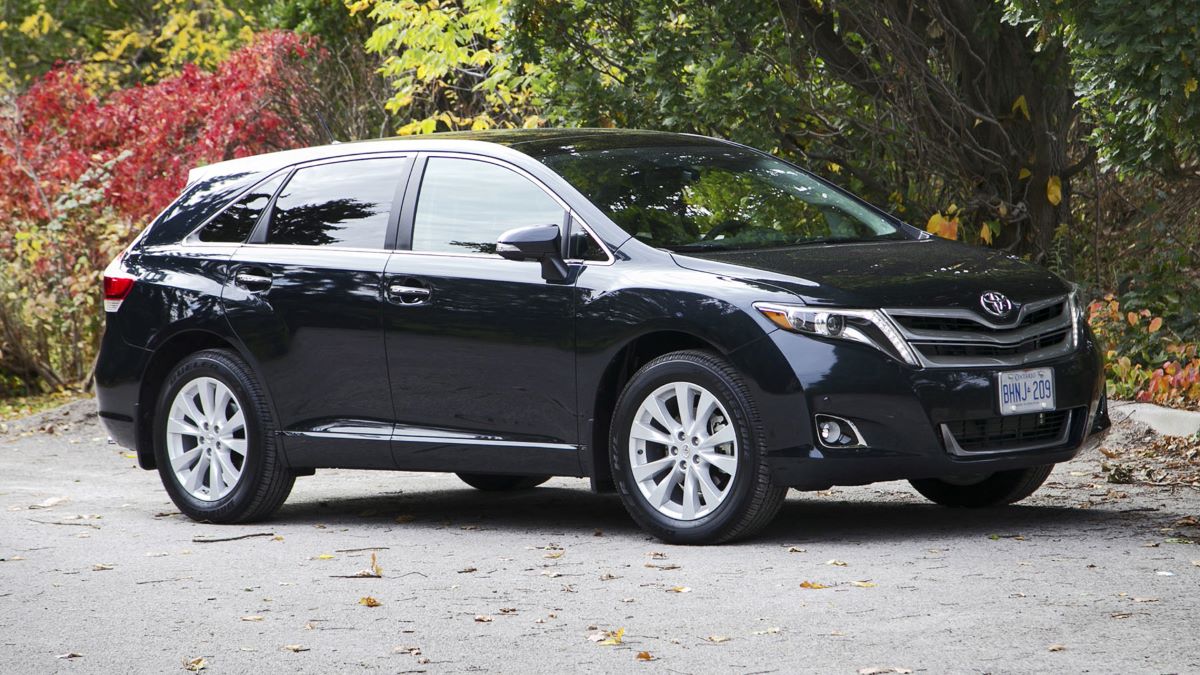
Its high beltline, sluggish movements, and its relentlessly dull attitude are all things I can’t stand. I also noticed some poor trim fits inside, which raises doubts about whether Toyota has compromised its once-unquestionable quality standards.
However, I will admit that the Venza is a perfectly serviceable vehicle for those who live life in a haze. It’s affordable, fairly spacious, likely safe, and capable of mid-20s fuel economy. Since it’s a Toyota, durability is practically assured. If these features appeal to you, by all means, go for it—but please, keep your Venza out of my sight.
Wow. I didn’t think I cared much for the bland Venza and its further cluttering of Toyota’s lineup, but I don’t feel nearly as strongly against it as Mr. Don Sherman does. At least this Venza comes in a very attractive shade of gold umber mica paint. Still, it bears a striking resemblance to an unattractive Ford Edge, especially from the front.
Like Sherman, I also noticed poor panel fits and some cheap-feeling materials in a few places, particularly in the radio and HVAC center stack, though I’ve observed a dip in quality standards across Toyota’s products in recent years.
I expected the four-cylinder Venza to be painfully slow, but it manages to keep up with traffic just fine, as long as Joe and Jane Blow push the accelerator often enough (though I doubt they will).
At first, I was impressed by how quick it seemed, considering its relatively low horsepower and heavy weight. But upon further reflection, I believe my initial impression came more from the engine’s loudness than from any true speed.
I know this car isn’t fast, but I was still concerned by how the brakes only engage after the pedal is pressed a couple of inches. Also, I found the driver’s seat too flat in both the padding and positioning. I guess Toyota assumes that most American drivers bring plenty of cushioning to the table.
I don’t feel as strongly about the Venza as Don Sherman does. His reaction to its lack of personality is understandable, but for me, it simply leads to indifference rather than frustration. Venza buyers likely won’t care—or even notice—whether their car has a four-cylinder or six-cylinder engine.
That’s fine, because while the four-cylinder isn’t particularly powerful, it provides enough oomph to merge onto the highway at a reasonable speed and cruise through daily errands like grocery shopping or visiting the garden store for a flat of flowers.
The Venza owner’s priorities are likely reliability, ease of use, and adequate space for passengers and cargo—and in those areas, it delivers. Its higher step-in height and larger capacity make it an ideal choice for someone moving up from a Camry.
2012 Scion iQ
The Scion iQ was Toyota’s attempt to take on the Smart, which was selling tens of thousands of ForTwos in the United States. Wait, did we say tens of thousands?
Apologies, we meant tens. Granted, the Smart ForTwo was a subpar vehicle, and the iQ addressed many of its most glaring flaws. It offered a smoother transmission, better interior design (it could fit three people if one of them was small enough), and, of course, much superior build quality.
However, it was still a completely impractical car for America, where the ability to park easily is nowhere near as important as not fearing for your life when surrounded by giant pickup trucks.
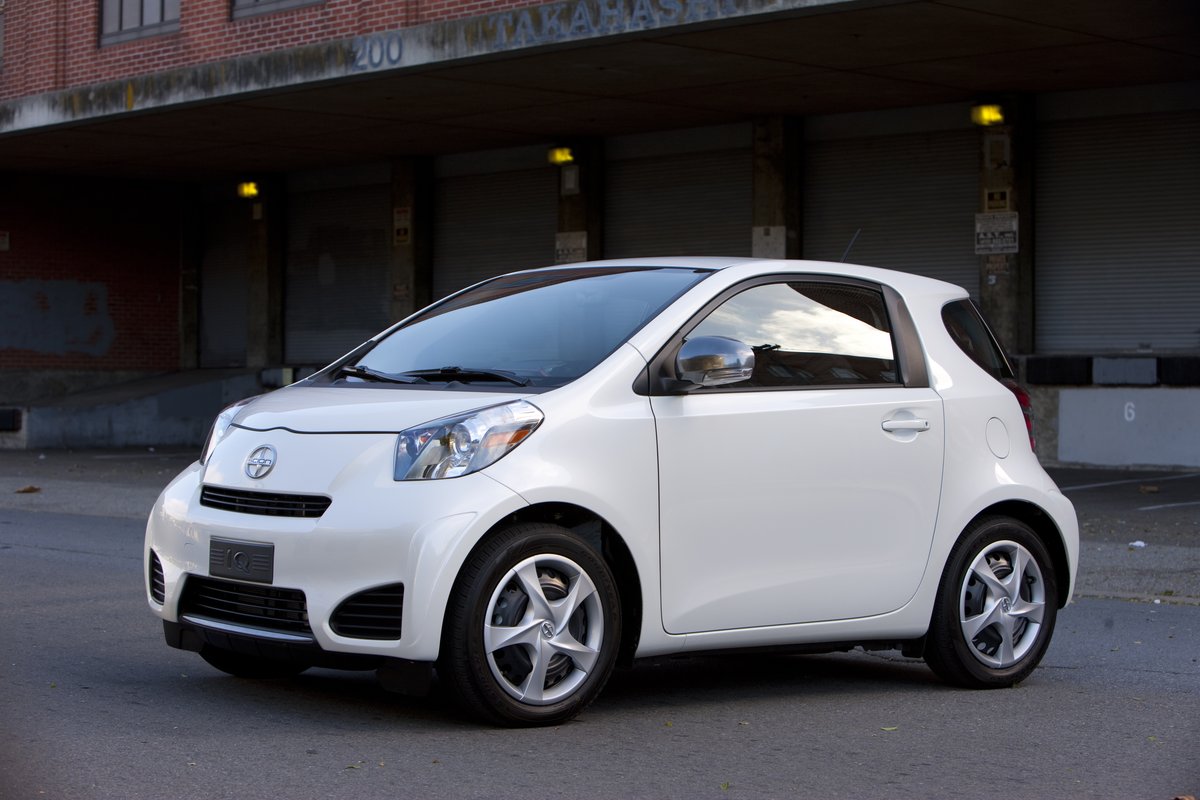
Perhaps we could have forgiven this “half-car” if it had been priced accordingly, but it wasn’t the iQ was priced similarly to a well-equipped Toyota Corolla.
Things would only get worse, though, as Aston Martin later turned this car into the Cygnet, an embarrassing chapter for an otherwise prestigious brand (except, of course, for the V-8 version).
The iQ’s first-year sales barely surpassed 9,000 units, trailing the Smart, and they continued to decline by half or more each year until Scion finally gave up in 2015. Selling it in the U.S. was a misguided decision, and the irony of the car’s name is certainly not lost on us.

